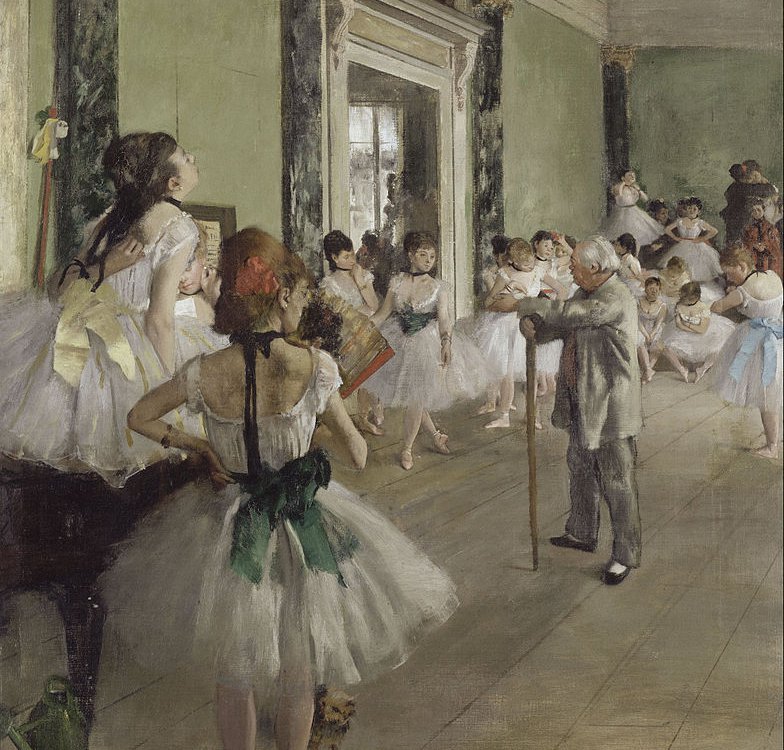The spring/summer 2021 ready wear collections saw designers such as Valentino, Dior, and Celine drawing inspiration from a style synonymous with refined elegance and femininity: ballet.
This resurgence in ballet-inspired looks has continued to rise in popularity throughout the year and has featured prominently in many design houses’ 2022 runway looks. Whether in haute couture or in popular culture dance-inspired fashion is having a moment in the form of slippers, leggings, and cropped cardigans to name a few.

While ballet and fashion hold a symbiotic relationship in the contemporary mind, the history of dance costuming and fashion design is a more novel phenomenon than one might expect. Prior to the 1930s, the ballerina – who today is a symbol of grace and delicacy was something of a social pariah and as such not a suitable muse for designers.
The original ballet dancers of the 17th century were predominantly male. They wore heeled shoes, a stiff skirt made of wire and brocade, and leather masks similar to those seen in ancient Greek dramas which depicted exaggerated tragic or comedic expressions. It was in the 19th century that ballet would become increasingly popular and more recognizable to the modern viewer for its romantic and form-fitting silhouettes. This change in aesthetic was due in part to the increased presence of female dancers in the ballet that occurred over the course of two centuries. While ballet became a more broadly popular art form, the identity of the ballerina existed in shades of grey.

Throughout the 19th century, the ballerina was a figure caught between high and low society for the assumed immorality of her profession. As Edgar Degas so often alluded to in his paintings of dancers, ballerinas often acted as sex workers for men of the upper classes. Part of the reason these girls were sought after for sexual favours was the relatively revealing manner in which they dressed. While most women in the 1800s dressed modestly in ankle-length dresses and high collars, ballet fashion had experienced a revolution that saw the introduction of form-fitting costumes inspired by Grecian robes. While these changes in dress were intended to allow the dancers ease of movement they were simultaneously increasingly sexualized. In fact, the tutu which was invented by the dancer Marie Taglioni was given this name by patrons who claimed the short skirt allowed them to glimpse the dancer’s ‘cucu’ while she was up on stage. This equation between the ballet dancer and the sex worker would in many instances relegate these women to the fringes of society and remained prevalent in the social canon until the 1930s.

The 20th century would bring a gradual end to this connotation as ballet was seen more as a high art form. In 1932, Vogue magazine published an 8-page spread dedicated to a production whose costumes were designed by Christian Bernard who would become the mentor for Christian Dior. Furthermore, as early as 1925 design houses were featuring ballet-inspired looks in their collections. From the 1930s to 70s ballet costume materials such as tulle and feathers were featured on runways and were particularly influential for the Balmain and Dior houses.
In 2022 designers are again finding inspiration in the ballerina as a symbol of elegance and femininity. Elie Saab’s Spring 2022 collection features large amounts of bright pink tule in the form of billowing full skirts. Similarly at Valentino, models graced the runway in looks that featured tulle, draped fabrics, and long gloves and tights reminiscent of both dancers and patrons of the ballet. While Dior has always had roots in dance costuming, their runway was dominated this season by low ballet-strap heels, tulle, tights, and bodysuits with most of the model’s hair being pulled back into a ballerina-esque bun. Whether through overt references or in subtle hints, design houses have been returning to the ballet craze of the mid 20th century this season. It is clear however that the imagery inspiring these designers is not one of a sordid social figure but of the more modern – elegant vision of the ballerina.

Similarly in popular fashion, the recent return of little cardigans, tights and flat shoes is being celebrated for its comfort and understated elegance while simultaneously being imbued with images of femininity and innocence. This positive reception to dancewear offers a sharp contrast to its original connotations and thus demonstrates the ability of time and trend cycles to dictate public reception towards whole communities. Indeed the ballerinas of 2022’s runways bear little resemblance to the dancers that Degas painted.

Kate is an Editorial Intern at Liminul.
She is a writer, photographer, and graphic designer based in Montreal. Kate is currently in her final year of her B.A. at McGill University where she is double majoring in history and art history.

